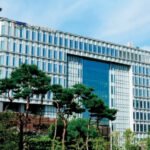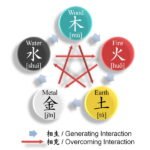Introduction to the Later Goryeo Dynasty
The Later Goryeo Dynasty, which lasted from 918 to 1392, is a crucial period in Korean history that signifies a transformative era leading into the formation of the Joseon Dynasty. Emerging after the initial unification efforts of the early Goryeo, this dynastic phase played a vital role in shaping Korean culture, governance, and social dynamics. At its zenith, the Later Goryeo Dynasty oversaw significant advancements in various fields, including literature, art, and Buddhist practices, leaving a lasting impact on the national identity.
Geographically, Goryeo was centered in the northern part of the Korean Peninsula, with its capital located in the present-day city of Kaesong. The positioning of the dynasty facilitated trade and communication with neighboring regions, including China and Japan, highlighting its central role in East Asian geopolitics. However, despite these advantages, the Later Goryeo faced numerous challenges that would eventually lead to its decline. Internal strife, corruption, and social inequality characterized the political landscape, eroding the efficiency of the royal administration.
Additionally, external pressures, such as invasions from Mongol forces, further weakened the already fragile state. The repercussions of these invasions were profound, as they not only destabilized the political structure but also triggered vast societal changes. The struggles against foreign invasions marked a significant era that propelled the society into a quest for reform and resilience as they sought to preserve Goryeo’s cultural heritage.
As the foundational values and institutions of the Later Goryeo Dynasty began to unravel, the groundwork was being laid for the emergence of the Joseon Dynasty. This transition reflects a pivotal transformation in Korean history, marked by both continuity and change, setting the stage for a new era in governance, culture, and social order in Korea.
Cultural and Economic Developments
The Later Goryeo Dynasty, spanning from the late 11th century to the late 14th century, was marked by significant cultural and economic advancements that profoundly influenced Korean society. During this period, literature and art flourished, reflecting the era’s sophisticated consciousness and diverse philosophical influences. Notably, the proliferation of written works, including historical accounts and poetic literature, showcased the intellectual vigor of the time. The publication of texts such as the “Samguk Sagi” (History of the Three Kingdoms) illustrated a growing literary tradition that would pave the way for future scholarly endeavors.
Artistic expression in the Later Goryeo period also experienced remarkable enhancement, especially in the realms of ceramics and painting. The distinctive celadon pottery, characterized by its high-quality glaze and intricate designs, became emblematic of this era. These artistic achievements were not mere aesthetic pursuits but were deeply intertwined with the prevailing religious sentiments of Buddhism, which thrived during this time. The construction of temples and the patronage of Buddhist art and practices reflected a societal commitment to spirituality, with monumental structures and exquisite sculptures contributing to the cultural landscape.
In addition to cultural developments, the Later Goryeo Dynasty saw notable economic growth, largely driven by burgeoning trade activities. The increased commercial engagements not only enhanced local economies but also connected Korea to regional and international markets. This period marked the establishment of a more complex economic structure, characterized by advances in agricultural techniques and the diversification of trade goods, including silk, textiles, and ceramics. As Buddhism and Confucianism gained momentum, their philosophical tenets began to influence governance and social relationships, shaping the societal framework and leading to the eventual transition to the Joseon Dynasty.
Political Turmoil and Corruption
The Later Goryeo Dynasty, which lasted from the 11th to the 14th centuries, experienced profound internal challenges that significantly influenced its political landscape. One of the most pressing issues was the rampant political corruption within the government. Officials exploited their positions for personal gain, creating a culture of dishonesty and inefficiency. As corruption permeated the bureaucracy, it became increasingly difficult for the government to function effectively, leading to widespread disenchantment among the populace.
In addition to corruption, factionalism emerged as a significant barrier to effective governance. Various political factions within the court vied for power, often prioritizing their interests over the stability of the dynasty. These factions were not merely ideological but often rooted in familial ties and personal alliances. The infighting among these groups resulted in a divided and weakened administration, further alienating citizens who yearned for a unified and stable leadership. The factional struggles not only undermined the central authority but also hindered any meaningful progress on pressing societal issues.
The erosion of royal authority became apparent as the corruption and factionalism intensified. The monarch, initially seen as the unquestionable symbol of power, found his influence waning. With each passing year, the populace began to perceive the monarchy as an ineffective institution unable to address their grievances. This erosion of trust in the royal authority contributed to increasing public discontent, culminating in a loss of legitimacy for the ruling class. The culmination of these internal challenges ultimately paved the way for the Later Goryeo Dynasty’s decline and set the stage for the rise of the Joseon Dynasty.
Rebellion and the Rise of Commanders
The Later Goryeo Dynasty faced a series of rebellions that underscored its declining authority, reflecting the turmoil experienced by the Korean peninsula during this period. Among the most significant uprisings was the Idong Rebellion, which marked a pivotal moment in the struggle against the centralized power of Goryeo. This insurrection, like many others, stemmed from widespread dissatisfaction with the ruling elite, exacerbated by socioeconomic distress and the perceived ineffectiveness of the Goryeo monarchy.
As discontent grew, military leaders began to emerge as influential figures. General Yi Seong-gye, who would later found the Joseon Dynasty, was one such commander who capitalized on the chaotic environment. Following his successful military campaigns, Yi Seong-gye garnered considerable prestige and a loyal following among the army ranks. It was during this time that military prowess became synonymous with political influence, altering the traditional dynamics of power that had long been dominated by royal lineage and bureaucratic governance.
Furthermore, the emergence of military leaders like Yi Seong-gye was indicative of a shift in society’s perception of leadership. In an age characterized by rebellion and instability, the populace started to view successful military commanders as viable alternatives to the ineffective Goryeo monarchs. This transition was not merely a matter of personal ambition; it was underpinned by a collective aspiration for reform and stability, which the ruling class failed to provide. In this context, the seeds of change were being sown, laying the groundwork for the eventual overthrow of the Goryeo Dynasty and the rise of the Joseon Dynasty.
Ultimately, the rebellions and military ascendancy during the late Goryeo period symbolized a critical juncture in Korean history. These events reshaped the political landscape and highlighted the growing importance of military authority in a time of crisis, ushering in a new era that would define the future of Korea.
The Founding of the Joseon Dynasty
The establishment of the Joseon Dynasty in 1392 marked a significant turning point in Korean history. It followed a period of turmoil during the Later Goryeo Dynasty, which faced internal strife and external invasions. The most pivotal event leading to the founding of Joseon was the coup led by General Yi Seong-gye, who would later take the throne as King Taejo. Yi Seong-gye’s motivations stemmed from his dissatisfaction with the Goryeo monarchy, particularly its inability to effectively govern, protect the borders, and respond to the sociopolitical crises that plagued the kingdom.
General Yi garnered support from a diverse coalition of factions, including local gentry and military officials disillusioned with the Goryeo leadership. He successfully capitalized on the prevailing discontent by promising reforms and stability. Following a series of military victories against the invading Japanese pirate forces and the weakened Mongolian Yuan Dynasty, his popularity surged. The disintegration of Goryeo authority made it increasingly feasible for Yi Seong-gye to position himself as a unifying figure capable of restoring order.
The decisive moment came in 1388 when Yi Seong-gye, initially sent to repel a Japanese invasion, instead launched an attack on the Goryeo capital of Gaegyeong. This maneuver effectively destabilized the Goryeo court and led to infighting among its factions. Following his ascension, Yi implemented significant reforms to consolidate power, including the establishment of a new administrative framework and social order. His establishment of the Joseon Dynasty not only set new governance paradigms but also laid the foundation for cultural, economic, and political advancements that would define Korea for centuries.
Ultimately, the founding of the Joseon Dynasty was more than just a change of rulers; it heralded an era of transformation, symbolizing the evolution of Korean identity during a time of uncertainty and upheaval.
Yi Seong-gye and His Vision for Joseon
Yi Seong-gye, who would later ascend to the throne as King Taejo of Joseon, is an essential figure in understanding the transition from the Later Goryeo Dynasty to the Joseon Dynasty. Born into a turbulent period marked by political strife and social upheaval, Yi distinguished himself as a capable military leader. His pivotal role in the overthrow of the Goryeo Dynasty was driven not only by ambition but also by a desire to restore stability to a fragmented nation. With his ascension, Yi Seong-gye envisioned a new dynasty grounded in Confucian principles, which would play a crucial role in shaping the governance of Joseon .
Taejo’s governance style reflected his commitment to fostering a cohesive national identity. He sought to reduce the influence of the corrupt elites that had permeated Goryeo, instead promoting a merit-based system that would elevate commoners and promote loyalty to the state. His policies aimed to forge a unified society, highlighting the importance of social harmony and collective progress. By implementing land reforms and redistributing wealth, he worked to alleviate the plight of the rural population, thus earning their support and legitimacy for his newly established rule.
Furthermore, King Taejo’s emphasis on Confucian ideals was fundamental in legitimizing his authority. He positioned Confucianism as the guiding philosophy, which aimed to cultivate virtuous leadership and ethical governance. This ideological shift not only differentiated Joseon from its predecessor but also set a framework for administrative procedures that prioritized integrity and moral rectitude. Through educational reforms and the establishment of Confucian academies, Yi Seong-gye endeavored to cultivate a learned society that would sustain the principles of the new dynasty.
In his quest for unity and stability, Yi Seong-gye laid the groundwork for what would become one of Korea’s most enduring dynasties. His efforts to reconcile various societal factions and promote Confucian governance underscored his vision for Joseon, shaping the future of Korea in profound ways.
Transition from Goryeo to Joseon: A Cultural Shift
The transition from the Later Goryeo Dynasty to the Joseon Dynasty marked a significant cultural shift in Korean history that profoundly influenced the nation’s identity. The Later Goryeo Dynasty, which lasted until the late 14th century, was characterized by a centralized aristocratic system with Confucian elements intertwining with Buddhist influences. However, as the political structures began to fragment, various factions emerged, setting the stage for transformation. The rise of the Joseon Dynasty, beginning in 1392, presented a new governing ethos, fundamentally altering Korea’s sociopolitical landscape.
One profound change was the transition from Buddhism, which had flourished during the Goryeo period, to Confucianism as the state ideology. The Joseon Dynasty emphasized Confucian values, which permeated governance, education, and social norms. Confucian scholars became the intellectual backbone of the administration, leading to a more structured society that prioritized hierarchy, filial piety, and moral conduct. This shift not only altered governance but also fostered a new cultural identity that celebrated education and ethical behavior as paramount virtues.
Moreover, the Joseon period saw the development of Hangul, the native Korean writing system. King Sejong the Great, recognizing the necessity for accessible literacy among the common people, initiated its creation. This innovation represented a cultural turning point, fostering a sense of nationalism and unifying the populace under a shared linguistic identity. The emphasis on education and literacy during this time contributed to the proliferation of literature and philosophy, shaping a distinct cultural landscape that diverged from its Goryeo predecessors.
In essence, the transformation from Goryeo to Joseon was more than a mere political transition; it was a cultural reawakening that helped define Korea’s identity through advancements in governance, philosophy, and language. These changes laid the groundwork for the development of Korean society in the following centuries.
Challenges in Establishing the New Dynasty
The early years of the Joseon Dynasty were marked by significant challenges that tested its resilience and capacity for governance. One of the primary obstacles was the persistent resistance from loyalists of the Goryeo Dynasty. These loyalists were firmly rooted in the traditions and legitimacy of the Goryeo rule, often rallying support among the populace who were unwilling to accept a new regime. This resulted in discontent and sporadic uprisings that threatened the stability of the newly established government. The Joseon rulers were thus compelled to devise strategies that would not only quell dissent but also foster a sense of loyalty and legitimacy among former Goryeo subjects.
Economic difficulties further compounded these challenges. The transition from Goryeo to Joseon involved significant disruptions in trade and agriculture, leading to resource shortages and fiscal strain. The new dynasty had to address these economic issues promptly in order to prevent widespread famine and civil unrest. Reforms were essential to stabilize the economy and establish a functioning administrative system that could effectively tax and manage resources. This effort was critical in instilling confidence among the populace and showcasing the effectiveness of the new ruling class.
Furthermore, the Joseon Dynasty had to navigate the threats posed by potential invasions from neighboring states. The power vacuum created by the Goryeo downfall attracted the attention of external forces keen on expanding their territories. In response, the Joseon leadership prioritized military readiness and diplomatic efforts to secure peace with its neighbors. Such measures were crucial in not only protecting the fledgling dynasty but also in shaping a national identity that emphasized strength and resilience. Consequently, the Joseon Dynasty’s formative years were characterized by a multifaceted approach, striving to consolidate power amidst resistance, economic adversity, and external threats.
Legacy of the Later Goryeo and Early Joseon Dynasties
The transition from the Later Goryeo to the Joseon Dynasty marks a pivotal moment in Korean history, characterized by significant societal, cultural, and political changes. The Later Goryeo Dynasty, despite its internal strife and fragmentation, established an administrative framework and cultural foundation that would influence the new ruling power, the Joseon Dynasty, which was founded in 1392. One of the most notable legacies of the Later Goryeo is its promotion of Confucian ideals, which would be further integrated and emphasized by the Joseon rulers.
The societal structures developed during the Later Goryeo laid the groundwork for the deeply hierarchical society established by Joseon. The prevailing social stratification, which included the emergence of the yangban class, a powerful group of scholar-officials, was rooted in the values propagated during the Later Goryeo era. This class not only held significant political power but also championed the cultural and educational reforms that flourished in Joseon. Their reverence for Confucian scholarship transformed the civil service examination system, ensuring a merit-based approach to governance that became a hallmark of the Joseon period.
Culturally, the Later Goryeo’s dedication to the arts, particularly pottery and literature, was inherited by the Joseon Dynasty, which is renowned for its advancements in these fields. The blue-and-white porcelain and literary works that emerged during Joseon reflect the aesthetic tastes and intellectual pursuits established in the Later Goryeo era. Additionally, the innovations in printing technology that began in Goryeo significantly facilitated the spread of literature and education, which became instrumental in solidifying Chosun’s cultural impact.
In conclusion, the legacy of the Later Goryeo Dynasty permeated the early years of the Joseon Dynasty, shaping its political, societal, and cultural landscapes. The lingering influence of Goryeo’s institutions and values provided a foundation that would sustain the Joseon Dynasty for centuries, establishing a continuum in Korean history that merits careful examination and appreciation.













